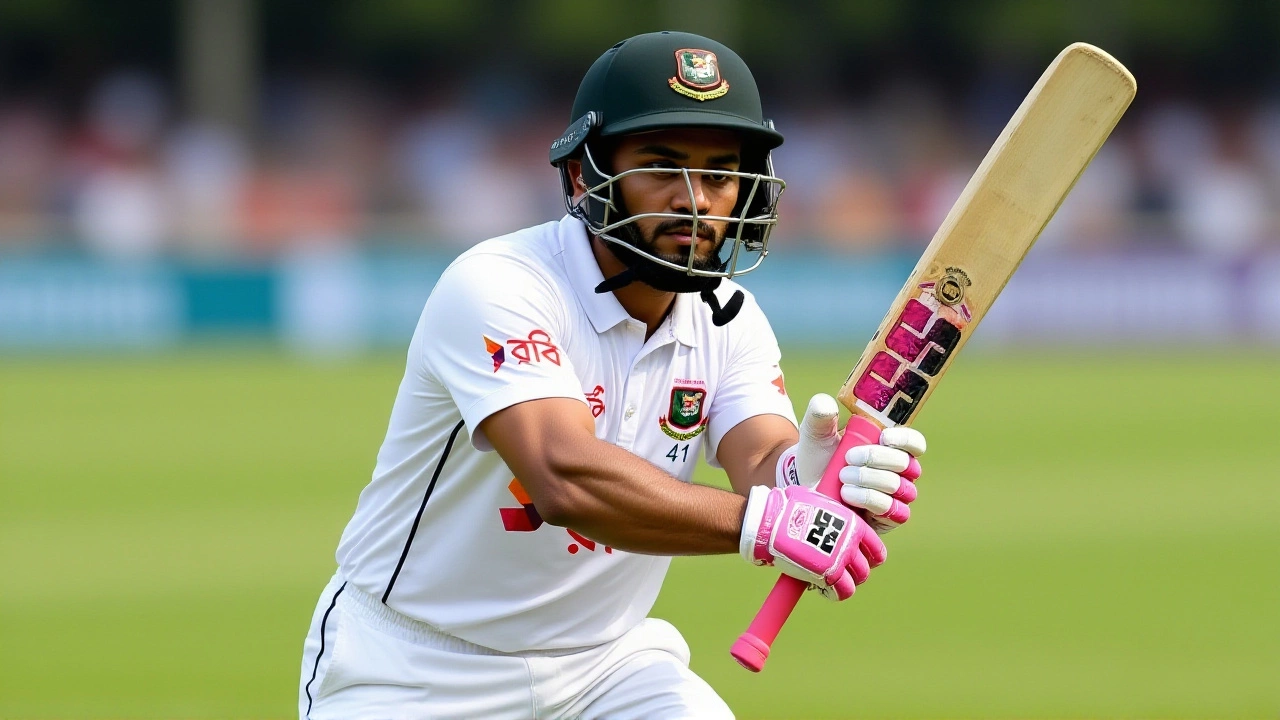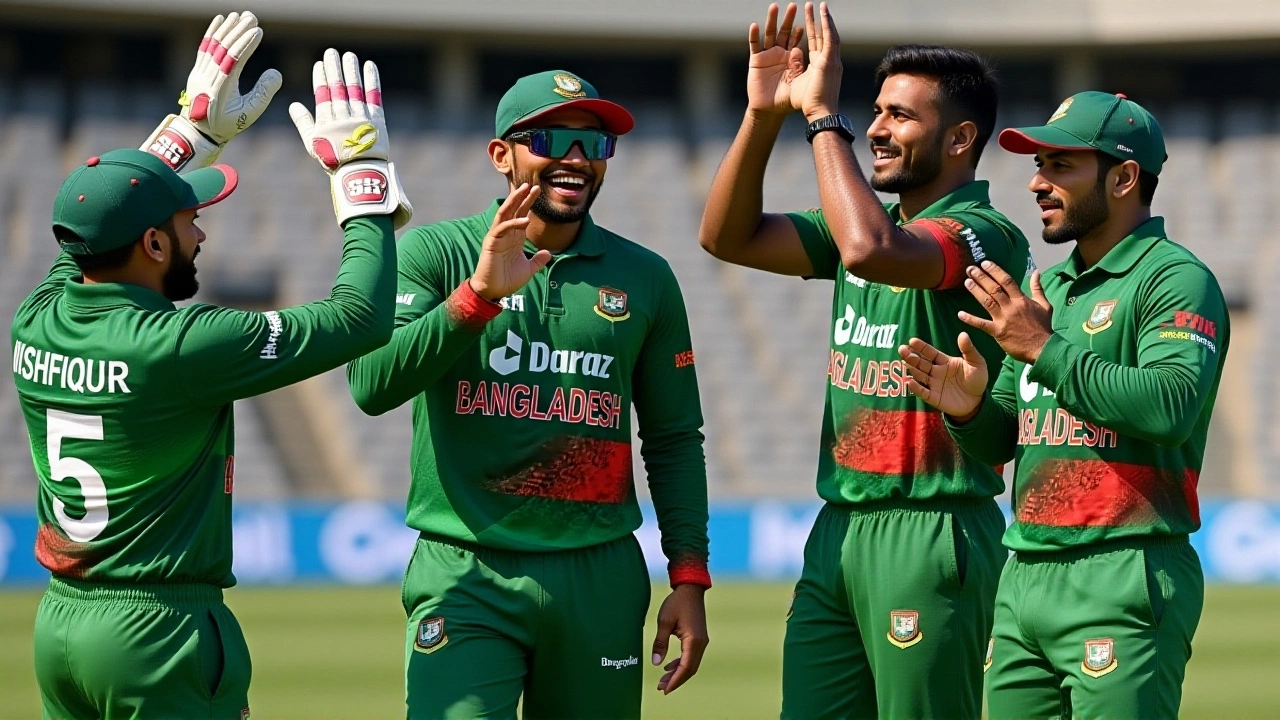When Jasprit Bumrah pulled out of India’s ICC Champions Trophy 2025Pakistan squad due to a nagging lower back injury, the cricket world braced for a ripple effect. But no one expected the dominoes to fall like this. On February 18, 2025, the BCCI didn’t just replace Bumrah with 23-year-old Harshit Rana—they upended their entire batting structure by axing opener Yashasvi Jaiswal and slotting in 33-year-old mystery spinner Varun Chakaravarthy. The move wasn’t just surprising. It was strategic. And it tells you everything about how India plans to win in Dubai.
Why Dubai Changes Everything
Here’s the thing: the ICC Champions Trophy 2025 is being co-hosted by Pakistan and the UAE, but India’s entire group stage—three matches—is locked into Dubai. And Dubai’s pitches? They’re not your typical Champions Trophy surfaces. Unlike the green, seam-friendly tracks of England or Australia, Dubai’s pitches slow down, grip, and turn. The ball doesn’t zip off the surface—it grips and skids. And that’s where spinners thrive.
That’s why the selection committee, led by Chetan Sharma, made a call that raised eyebrows but made tactical sense. With three all-rounders—Hardik Pandya, Ravindra Jadeja, and Axar Patel—already in the squad, India’s batting tail was already thin. Dropping Jaiswal, who averages 32 in ODIs but struggles against spin, wasn’t about form. It was about balance. They traded a top-order bat for a bowler who can break partnerships under pressure.
The New Bowling Trio: Rana, Shami, Arshdeep
Replacing Bumrah was never going to be easy. The man’s 100 wickets in 59 ODIs at an economy of 4.98? That’s elite. But Harshit Rana isn’t being picked as a stopgap—he’s being picked as a statement. The 23-year-old from Bengal made his ODI debut just 12 days ago against England in Nagpur, scalping four wickets in two matches. He didn’t just perform—he delivered with pace, swing, and nerve. His 19-wicket haul for Kolkata Knight Riders in IPL 2024? That’s not luck. That’s consistency under pressure.
And while Mohammed Shami and Arshdeep Singh remain, Rana brings something different: raw, unpolished aggression. He’s the kind of bowler who can exploit the early conditions in Dubai, when the ball is new and the dew hasn’t set in. The BCCI’s decision to bypass Mohammed Siraj, despite his experience, signals they’re betting on youth and momentum over pedigree.
Chakaravarthy: The Mystery Spinner Gambit
Then there’s Varun Chakaravarthy. At 33, he’s the oldest player in the squad. And yet, he’s the most intriguing. His leg-spin is deceptive, his variations are subtle, and his IPL record—especially against middle-order batters—is terrifying. Former India spinner Ravichandran Ashwin had publicly urged his inclusion back in early February, calling him “the X-factor India can’t afford to ignore.”
Wisden’s analysis nailed it: India is playing for spin dominance. With only one dedicated spinner in the 2024 T20 World Cup squad, this is a complete pivot. Chakaravarthy, along with Kuldeep Yadav and Jadeja, gives India three spin options. That’s unheard of in a tournament historically dominated by pace. But in Dubai? It’s a calculated risk. If the pitch holds, India’s spin trio could strangle oppositions. If it doesn’t? They’ll be exposed.

The Bigger Picture: Rebuilding for the Future
Let’s not pretend this is just about winning one tournament. This is about legacy. With Virat Kohli and Rohit Sharma nearing the end of their international careers, the BCCI is quietly testing the next generation. Rana, Chakaravarthy, and even Axar Patel—once seen as a backup—are now central to India’s ODI future. This squad has eight players from the 2024 T20 World Cup win, but it’s the new faces who might define the next chapter.
And here’s the quiet truth: Bumrah’s injury might be the catalyst for something bigger. India’s pace attack, once built around his magic, is now being reshaped around depth. Rana’s inclusion isn’t a downgrade—it’s a transition. And if he delivers in Dubai, he won’t just be a replacement. He’ll be the new face of India’s pace attack.
What’s Next? The Tournament Begins in 7 Days
With the ICC Champions Trophy 2025 set to begin on February 26, all teams have locked their squads. India’s opener against Australia on March 1 in Dubai will be the ultimate test. Can Rana handle the pressure of replacing a legend? Can Chakaravarthy outwit the likes of David Warner and Phil Salt? Can India’s spin-heavy gamble pay off on a surface that’s never seen this many spinners in one XI?
One thing’s certain: the old rules don’t apply anymore. In Dubai, spin isn’t a backup plan. It’s the plan.
Frequently Asked Questions
Why was Yashasvi Jaiswal dropped despite being an opener?
Jaiswal was dropped not because of poor form—he’s averaged 32 in ODIs—but because India’s strategy in Dubai demands spin dominance. With only one dedicated opener (Shubman Gill) and three all-rounders already in the lineup, adding a specialist spinner like Varun Chakaravarthy gave them more control in the middle overs. The team is prioritizing bowling depth over batting bulk on slow pitches.
How does Harshit Rana compare to Jasprit Bumrah?
Rana doesn’t replicate Bumrah’s lethal yorkers or death-over control—he’s a different type of bowler. Where Bumrah is precision, Rana is power and swing. He’s younger, less experienced, but he’s shown nerve in high-pressure games, including his IPL 2024 performance and ODI debut. He’s not a replacement in skill, but a replacement in opportunity—India is betting on his potential to adapt quickly.
Why is Varun Chakaravarthy being trusted over a second opener?
Chakaravarthy’s inclusion reflects India’s belief that spin will be the decisive factor in Dubai. With only three batters below No. 6, the team is sacrificing batting depth for control. His mystery spin—especially the doosra and leg-break—has troubled top-order batters in the IPL. Against teams like Australia and England, who rely on aggressive middle-order hitting, his variations could be game-changing.
Is this squad a risk for India’s chances in the tournament?
Yes, it’s risky—but not reckless. India has never won the Champions Trophy since its revival in 2002, and past failures came from over-reliance on pace on flat tracks. This squad is built for a specific challenge: slow, gripping pitches. If the conditions play out as expected, India’s spin-heavy lineup could dominate. If the pitches turn out to be faster than predicted, they’ll be vulnerable. It’s a bold, calculated gamble.
What does this mean for India’s future ODI team?
This squad is a blueprint for the post-Kohli, post-Rohit era. Rana, Chakaravarthy, and Axar Patel represent the next generation of all-rounders and specialist bowlers. If they perform, India won’t just win the Champions Trophy—they’ll have a template for building a balanced, adaptable ODI team for the next World Cup. This isn’t just about 2025. It’s about 2027 and beyond.
When will Jasprit Bumrah return to international cricket?
The BCCI hasn’t confirmed a timeline, but sources say Bumrah’s back injury requires at least 8–10 weeks of rest and rehab. He’s expected to miss India’s home ODI series against Australia in March and possibly the first leg of the Asia Cup in June. His return will be carefully managed, with a focus on long-term fitness rather than immediate comeback.

